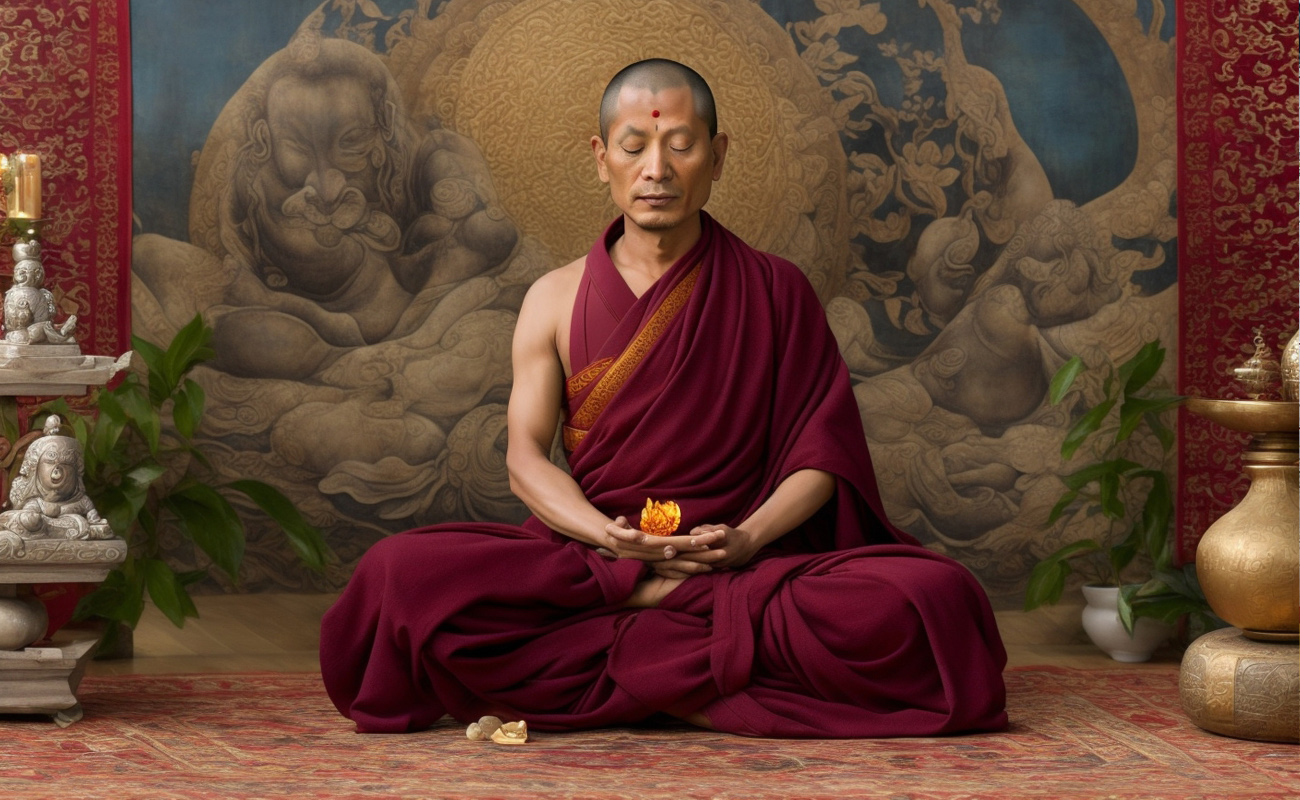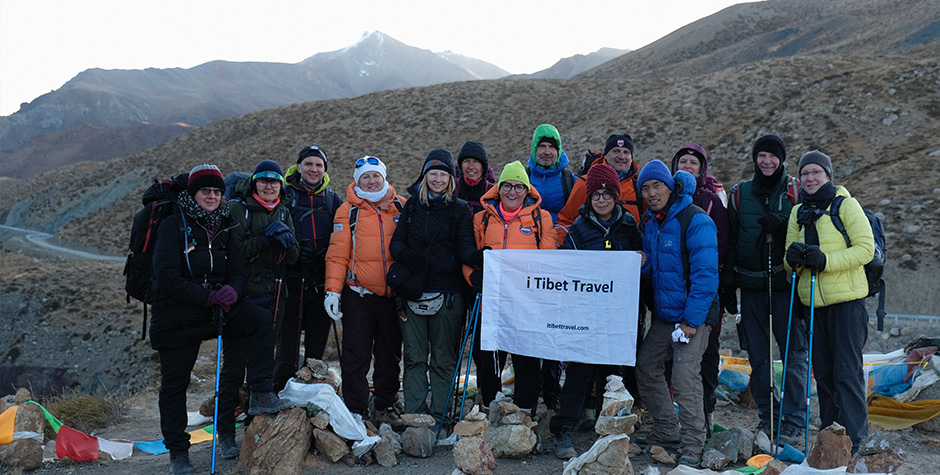Shamatha meditation, also known as “peaceful abiding” or “tranquility” meditation, is a foundational practice that paves the way for insight meditation, also called vipashyana. This form of meditation aims to stabilize the mind and cultivate a steady awareness of the chosen object of meditation, often leading to profound insights and a deeper understanding of the nature of mind.
In the pursuit of inner peace and mental clarity, many turn to various meditation techniques, one of which is shamatha meditation. This article delves into the essence of shamatha meditation, its purpose, techniques, and its role in the broader context of spiritual development.

What is Shamatha Meditation?
Shamatha meditation, derived from the Sanskrit word "shamatha," embodies the practice of achieving a state of peaceful abiding and tranquility. It is commonly referred to as mindfulness or concentration meditation. Through this practice, individuals develop heightened focus, stability, and clarity of mind.
The Purpose of Shamatha Meditation
The primary goal of shamatha meditation is to stabilize the mind by fostering unwavering awareness of the chosen meditation object. By directing the attention to a specific point of focus, such as the breath, the mind becomes less prone to wandering thoughts and distractions. This stability of mind serves as a foundation for further contemplative practices, ultimately leading to profound insights and spiritual awakening.
Types of Supports or Anchors for Shamatha Practice
Traditionally, shamatha practice employs various supports or anchors to cultivate mindfulness and concentration. These supports include visualizations, mantras, physical sensations, or the breath. These aids serve as focal points, grounding the practitioner's attention and deepening their level of presence.
Shamatha Meditation Using the Breath
One of the most commonly utilized supports in shamatha meditation is the breath. The breath provides a readily accessible and constant point of focus. Practitioners bring their attention to the sensation of breathing, observing each inhalation and exhalation with full awareness. This simple yet powerful technique cultivates concentration and helps calm the mind.
Experiencing the Mind through Shamatha Meditation
Shamatha meditation allows practitioners to witness the true nature of their minds. During the practice, individuals observe the ceaseless stream of thoughts arising in their minds. This observation reveals the dynamic and ever-changing nature of thoughts, some of which contribute to happiness and self-realization, while others do not. This realization helps practitioners develop a non-judgmental and accepting attitude toward the contents of their minds.
Calming Thoughts and Emotions
Consistent practice of shamatha meditation gradually leads to the calming of thoughts and emotions. As practitioners develop stability of mind, they cultivate tranquility and equanimity. This increased serenity allows individuals to engage with their thoughts and emotions in a more balanced and skillful manner, leading to a reduction in unhelpful and disruptive mental patterns.
Transitioning to Vipashyana Meditation
Once practitioners have achieved a certain level of stability and clarity through shamatha meditation, they are ready to embark on the practice of vipashyana, or insight meditation. Vipashyana involves investigating the nature of thoughts themselves, delving deeper into the understanding of the mind and its workings.
Transitioning to Vipashyana Meditation
Once practitioners have achieved a certain level of stability and clarity through shamatha meditation, they are ready to embark on the practice of vipashyana, or insight meditation. Vipashyana involves investigating the nature of thoughts themselves, delving deeper into the understanding of the mind and its workings.
Union of Calm Abiding and Insight
In the Vajrayana tradition of Buddhism, the ultimate aim is to unite calm abiding (shamatha) and insight (vipashyana). By seamlessly merging these two practices, practitioners can experience the true nature of the mind and reality itself. This union provides a transformative path toward spiritual realization and liberation.
Traditional Teaching of Shamatha Practice
Shamatha practice is traditionally transmitted through oral instructions, guiding students in cultivating meditative states. Initially, the instructions focus on developing mindfulness of the physical body and then progress to exploring the nature of the meditation instructions themselves. This gradual training allows practitioners to deepen their practice over time.
Conclusion
Shamatha meditation serves as a vital gateway to the profound inner realms of the mind. By stabilizing the mind and developing a focused awareness, individuals can gain insights, experience tranquility, and unlock the true potential of their consciousness. With consistent practice, shamatha meditation can lead to a harmonious integration of calm abiding and insight, opening the door to profound self-realization and spiritual growth.
FAQs
1. How long does it take to master shamatha meditation?
The duration to master shamatha meditation varies from person to person. It depends on factors such as individual dedication, consistency of practice, and the depth of one's focus. Generally, it may take several months to years of regular practice to cultivate a stable and unwavering state of shamatha.
2. Can anyone practice shamatha meditation?
Yes, anyone can practice shamatha meditation. It is a universal technique that transcends cultural and religious boundaries. Whether you are a beginner or an experienced meditator, shamatha meditation offers profound benefits for cultivating inner peace and mental clarity.
3. What are the benefits of shamatha meditation?
Shamatha meditation brings numerous benefits to practitioners. It enhances focus, concentration, and the ability to remain present in the moment. It cultivates tranquility, reduces stress, and promotes emotional well-being. Additionally, shamatha meditation lays the groundwork for developing insight and realizing the true nature of mind.
4. Is shamatha meditation the same as mindfulness?
Shamatha meditation is often equated with mindfulness meditation, as both involve developing focused attention and awareness. However, shamatha meditation specifically emphasizes stabilizing the mind, whereas mindfulness encompasses a broader scope, including the observation of thoughts, emotions, and sensory experiences with non-judgmental awareness.
5. Are there any potential challenges in practicing shamatha meditation?
While shamatha meditation offers significant benefits, it can present challenges. The mind's natural tendency to wander and the arising of distractions are common obstacles. Impatience and frustration may arise when progress seems slow. Consistent effort, patience, and compassionate self-acceptance are essential in overcoming these challenges and deepening one's practice.
About Tibet Travel & Tours
Tibet Travel & Tours is a local travel agency in Tibet that offers unique and authentic experiences to travelers from all around the world. As a leading tour operator in Tibet, we provide high-quality Tibet Travel services that are tailored to our clients' needs and preferences.
Our team of experienced and knowledgeable professionals strives to ensure that our clients have a hassle-free and memorable trip in Tibet. We specialize in various types of tours, including cultural tours, trekking and hiking tours, and adventure tours.
Our commitment to providing exceptional service has earned us a reputation as one of the best local travel agencies in Tibet. Contact us today to plan your unforgettable trip to Tibet.
Explore Tibet with a local Tibetan Travel Agency
If you're looking to explore Tibet, starting your journey with a reputable Tibetan travel agency in Tibet is crucial. Tibet Travel & Tours is a great choice to begin your adventure with their extensive knowledge of the region and commitment to responsible tourism.
Their Tibet tour packages cater to a range of interests and budgets, making it easy to plan a trip that suits your needs. Before embarking on your tibet tour, it's essential to have the right Tibet travel information and necessary documents, including a Tibet travel permit.
The Tibet Travel Planner provided by i-Tibet travel is an excellent resource to plan your trip, including tips on what to pack, where to stay, and what to see.
For beginners, the "About Tibet" guide provided by i-Tibet travel offers a comprehensive overview of the region's history, culture, and top attractions. So, start your Tibet travel plan here with i-Tibet travel and discover the magic of Tibet for yourself.










